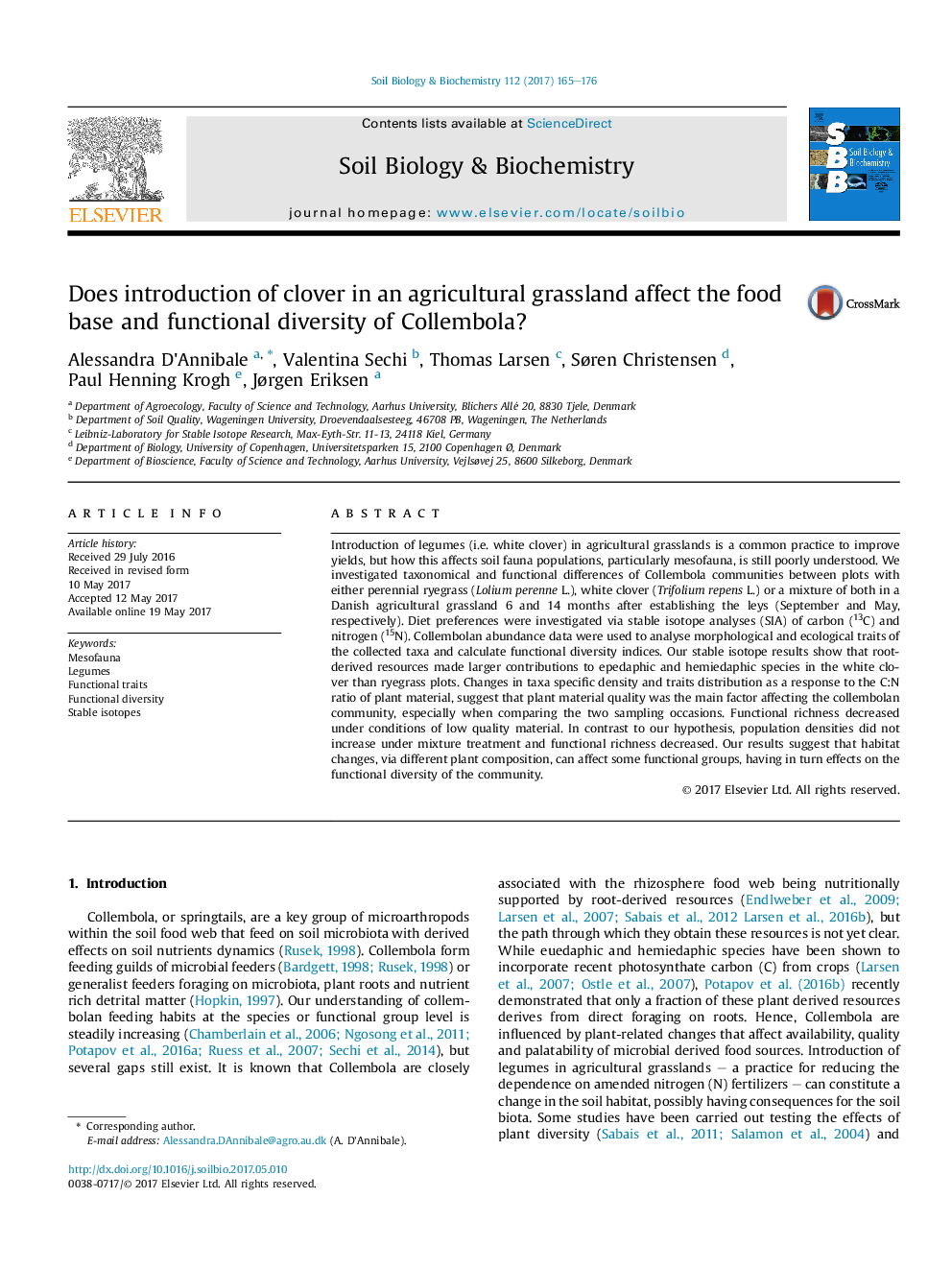| کد مقاله | کد نشریه | سال انتشار | مقاله انگلیسی | نسخه تمام متن |
|---|---|---|---|---|
| 5516347 | 1542572 | 2017 | 12 صفحه PDF | دانلود رایگان |

- We studied the effects of different cover crops on Collembola.
- We characterized the community taxonomically and via a trait-based approach.
- Carbon and nitrogen stable isotopes revealed diet shifts between treatments.
- The quality of plant-derived material was a driving factor for the community.
- Functional richness decreased under conditions of low quality of plant material.
Introduction of legumes (i.e. white clover) in agricultural grasslands is a common practice to improve yields, but how this affects soil fauna populations, particularly mesofauna, is still poorly understood. We investigated taxonomical and functional differences of Collembola communities between plots with either perennial ryegrass (Lolium perenne L.), white clover (Trifolium repens L.) or a mixture of both in a Danish agricultural grassland 6 and 14 months after establishing the leys (September and May, respectively). Diet preferences were investigated via stable isotope analyses (SIA) of carbon (13C) and nitrogen (15N). Collembolan abundance data were used to analyse morphological and ecological traits of the collected taxa and calculate functional diversity indices. Our stable isotope results show that root-derived resources made larger contributions to epedaphic and hemiedaphic species in the white clover than ryegrass plots. Changes in taxa specific density and traits distribution as a response to the C:N ratio of plant material, suggest that plant material quality was the main factor affecting the collembolan community, especially when comparing the two sampling occasions. Functional richness decreased under conditions of low quality material. In contrast to our hypothesis, population densities did not increase under mixture treatment and functional richness decreased. Our results suggest that habitat changes, via different plant composition, can affect some functional groups, having in turn effects on the functional diversity of the community.
Journal: Soil Biology and Biochemistry - Volume 112, September 2017, Pages 165-176